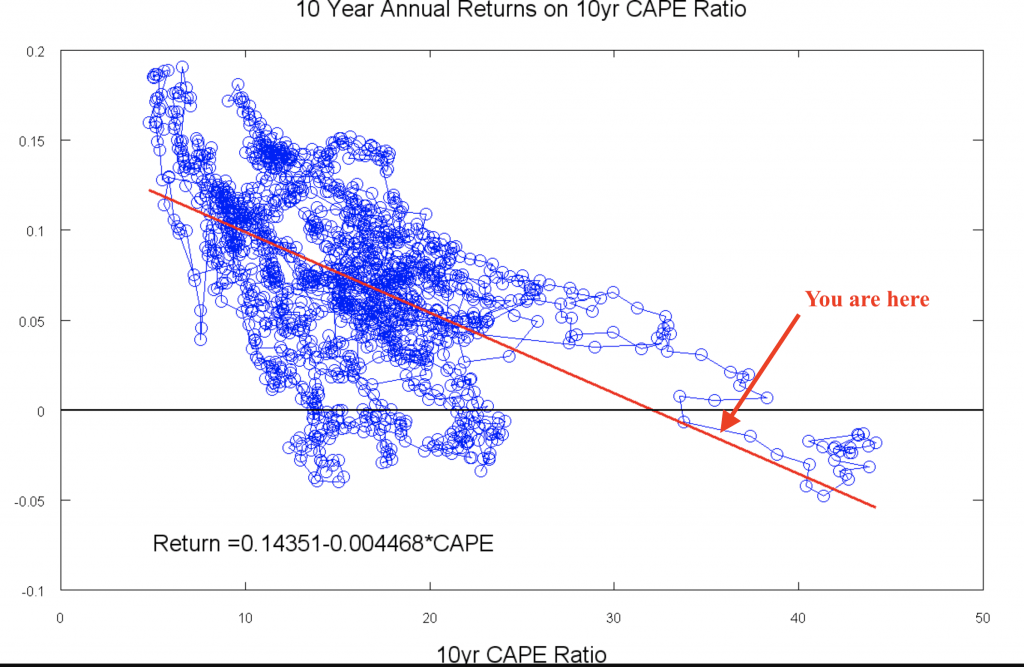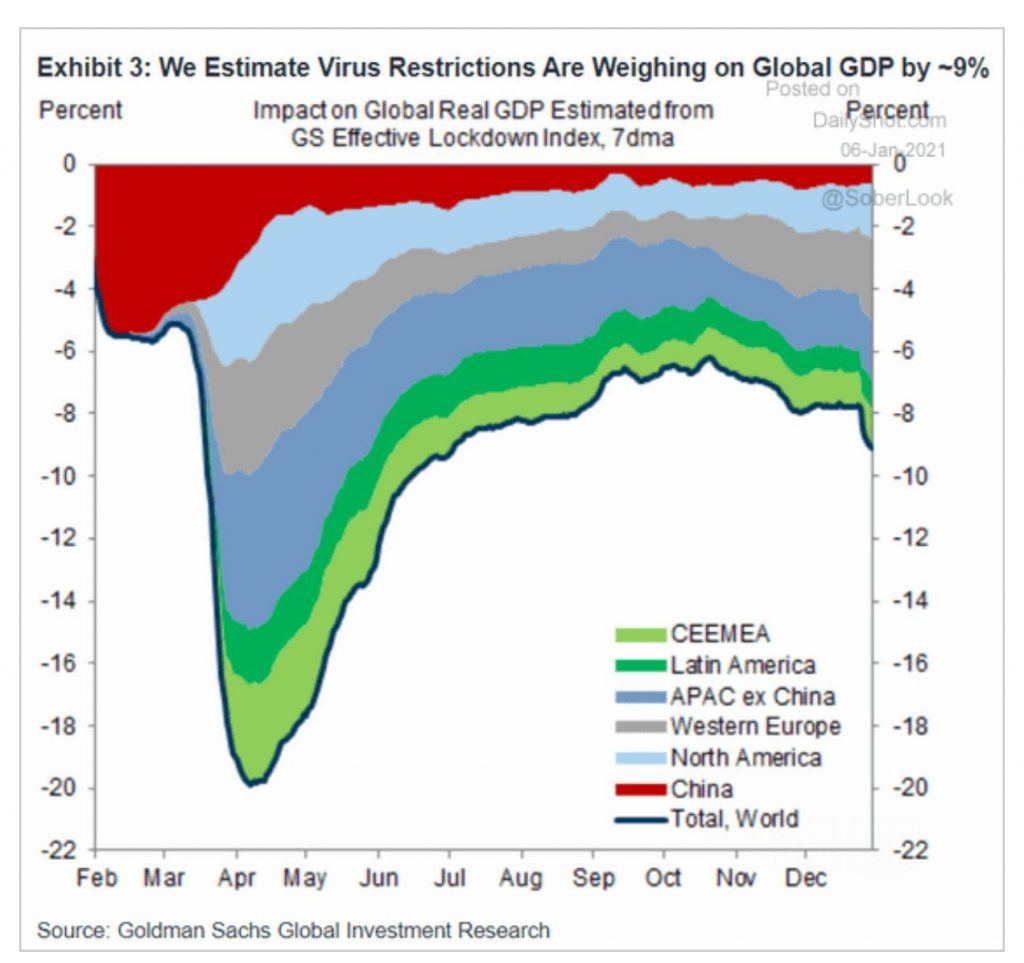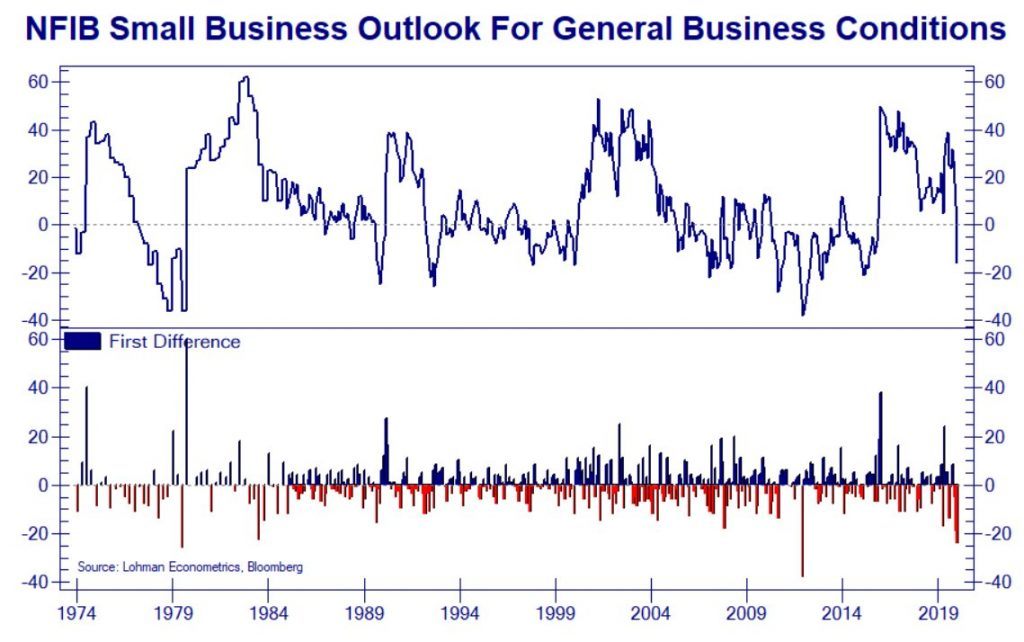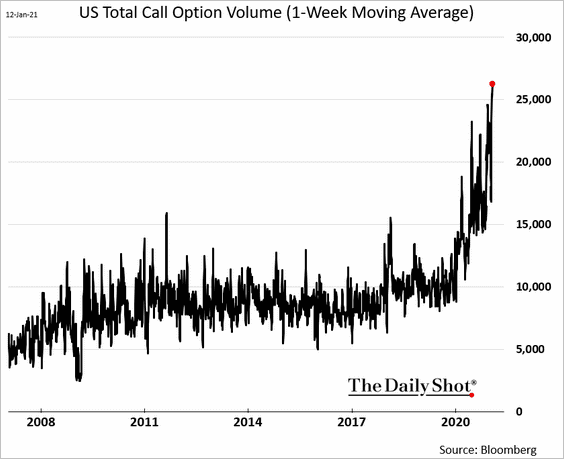The cyclically adjusted price-earnings ratio (CAPE) is among the most potent academic finance concepts. It estimated long-term equity returns reliably. 150 years of equity market history is plotted in the first chart below. The broad-based US equity market is currently priced at about a 34 CAPE, which coincided with a negative return during the subsequent ten years.
(Source: calculatinginvestor.com)
The Economic Recovery Is Rolling Over
CAPE’s message is that equities will most likely disappoint during the next decade. Nonetheless, the fundamental concept behind CAPE is not a short-term timing tool. Expansionary growth cycles can extend and theoretically lead from a 34 CAPE to a 40 CAPE by the end of the year. However, those who have read our latest write-ups know that we expect a double-dip impact on the economy. The unfortunate news is that the stock market disappointed in all NBER recessions of the past 170 years and economic activity weakened most recently. The second chart shows Goldman Sachs’ GDP estimates. Growth is deteriorating and rolling over across almost all regions.
(Source: Goldman Sachs)
The situation around the corona pandemic escalated once again. Large parts of Europe tightened lockdown measures and restrictions. These actions are likely to intensify the recessionary impulse. Infections in the US increased, and more hospitalizations are likely to occur during the next few weeks. The economic situation is extremely challenging. Small business outlook, which is a leading indicator, just had the third-largest drop on record. Unfortunately, the political developments in the US bring headwinds for a recovery. We have a status of substantial political polarization. Half of the country and most elected Republican officials question the presidential legitimacy. That’s the exact opposite of what we need right now: A strong US government, regardless of its political orientation, that can respond well to a massive crisis. There are global implications to that problem, given the US economy’s size. An expansionary cycle unlikely started already. Instead, there is a headwind from the economy for stocks, and similar situations led to double-digit corrections historically. Moreover, similar conditions did not persist for multiple years until rolling over.
(Source: Lohman Econometrics, Bloomberg)
It’s Probably A Matter Of Weeks – Not Months
Meanwhile, market participants remain excessively bullish. Sentiment indicators across the board confirm optimism as equities decoupled from the economy. Call option volume is a perfect example. It mirrors that excessive speculative demand is driving the equity market. The traded volumes surged to an all-time high. Call options are among the most leveraged and most risky alternatives to invest in the stock market. Excessive investor optimism levels are associated with subsequently surprising asset returns to the opposite direction of expectations.
Market technicals have been constructive and that could be changing at this junction. The rally that started in March 2020 was broad-based into January. It added more than 70% on the S&P 500 and even more than 90% to the Nasdaq from the March bottom. The advance unfolded in record speed and left no room for any significant pullbacks. However, we have witnessed divergence on multiple time scales lately. That has been an early indicator of an imminent trend reversal historically. It signals that US equities are likely to reverse within the next weeks. A final swing above 3884 remains most likely before the wheels come off.
The bottom line is that fundamentals, behavioral evidence, and technicals are moving to the same side of the ledger. They signal a correction and it will be most likely substantial. The norm has been strong rallies and crashes during the past three years. That’s the new normal as nothing significant changed in or around the market structure. This time is unlikely different and long-term investors are best off outside equities.
Risk Warning: Trading foreign exchange on margin carries a high level of risk and may not be suitable for all investors. The high degree of leverage can work against you as well as for you. Before deciding to trade foreign exchange, you should carefully consider your investment objectives, level of experience, and risk appetite. The possibility exists that you could sustain a loss of some or all of your initial investment and, therefore, you should not invest money you cannot afford to lose. You should make yourself aware of all the risks associated with foreign exchange trading and seek advice from an independent financial adviser if you have any questions or concerns as to how a loss would affect your lifestyle.
Recommended Content
Editors’ Picks
AUD/USD stands firm above 0.6500 with markets bracing for Aussie PPI, US inflation

The Aussie Dollar begins Friday’s Asian session on the right foot against the Greenback after posting gains of 0.33% on Thursday. The AUD/USD advance was sponsored by a United States report showing the economy is growing below estimates while inflation picked up. The pair traded at 0.6518.
EUR/USD faces a minor resistance near at 1.0750

EUR/USD quickly left behind Wednesday’s small downtick and resumed its uptrend north of 1.0700 the figure, always on the back of the persistent sell-off in the US Dollar ahead of key PCE data on Friday.
Gold soars as US economic woes and inflation fears grip investors

Gold prices advanced modestly during Thursday’s North American session, gaining more than 0.5% following the release of crucial economic data from the United States. GDP figures for the first quarter of 2024 missed estimates, increasing speculation that the US Fed could lower borrowing costs.
Bitcoin price continues to get rejected from $65K resistance as SEC delays decision on spot BTC ETF options

Bitcoin (BTC) price has markets in disarray, provoking a broader market crash as it slumped to the $62,000 range on Thursday. Meanwhile, reverberations from spot BTC exchange-traded funds (ETFs) continue to influence the market.
US economy: Slower growth with stronger inflation

The dollar strengthened, and stocks fell after statistical data from the US. The focus was on the preliminary estimate of GDP for the first quarter. Annualised quarterly growth came in at just 1.6%, down from the 2.5% and 3.4% previously forecast.



